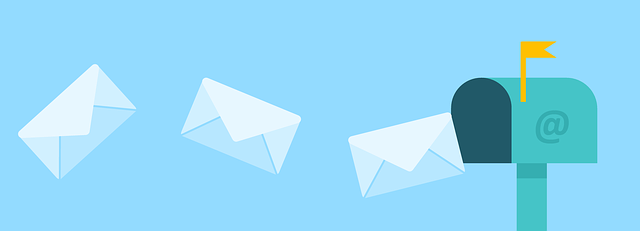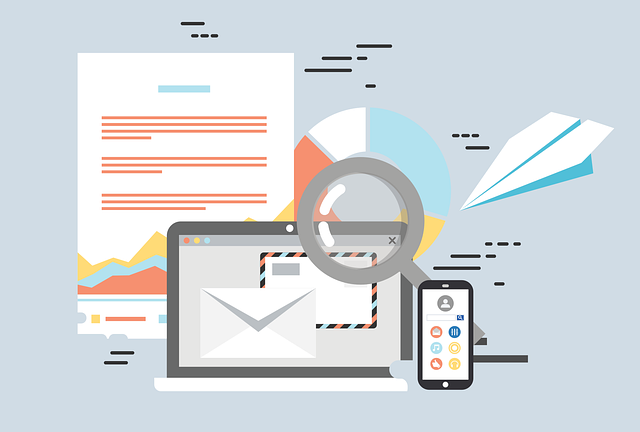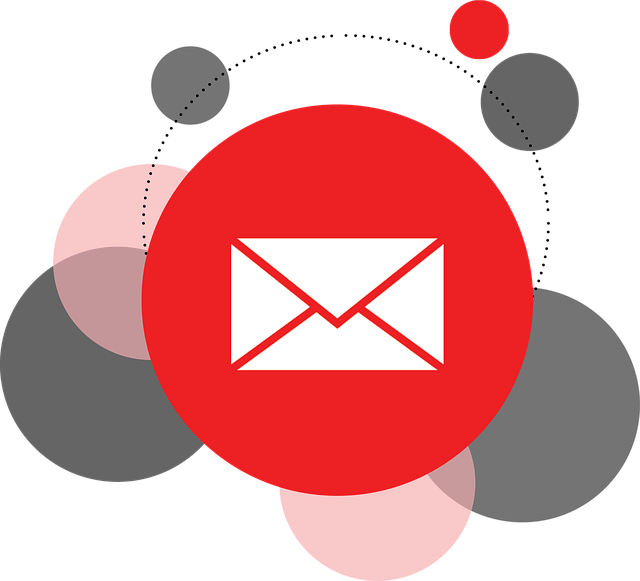Are you struggling to effectively reach your customers through email marketing? Are your campaigns not generating the desired results? Well, we have the solution for you.
Imagine being able to tailor your email campaigns to each individual customer, delivering personalized content that resonates with them on a deeper level. Customer segmentation is the key to achieving this level of personalization, and in this article, we will explore the best email marketing tools that can help you achieve it.
By segmenting your customer base, you can target specific groups with tailored messages, increasing engagement and ultimately driving conversions. But with so many tools available, how do you choose the right one for your business? We will guide you through the process, helping you evaluate your goals, research and compare tools, and implement effective segmentation strategies.
Get ready to revolutionize your email marketing campaigns and maximize their impact.
Key Takeaways
- Customer segmentation is crucial for personalized content and increased engagement in email marketing campaigns.
- Research and analyze target audience preferences and behaviors to effectively segment email lists.
- Choose an email marketing tool with features such as drag-and-drop editors, CRM integration, analytics, personalization, and automation for effective segmentation.
- Monitor and analyze metrics such as open rates, click-through rates, and conversion rates to refine segmentation strategies and improve email marketing effectiveness.
Understand the Importance of Customer Segmentation
Understanding the importance of customer segmentation is crucial for effectively targeting your email marketing campaigns. By dividing your customer base into distinct groups based on characteristics such as demographics, behavior, and preferences, you can tailor your messages to meet their specific needs and interests.
Customer segmentation strategies enable you to deliver personalized content that resonates with your audience, increasing engagement and conversion rates. Moreover, it allows you to allocate your marketing budget more efficiently by focusing on the segments that are most likely to generate revenue.
The benefits of customer segmentation extend beyond improved campaign performance. It also helps you build stronger relationships with your customers, as they feel understood and valued.
Now that you grasp the significance of customer segmentation, let’s move on to evaluating your email marketing goals and objectives.
Evaluate Your Email Marketing Goals and Objectives
To effectively evaluate your email marketing goals and objectives, it’s important to address any concerns that may arise regarding the relevance and impact of customer segmentation. By implementing an effective segmentation strategy, you can tailor your email campaigns to specific customer groups, increasing their relevance and ultimately improving your overall campaign success.
To ensure you are on the right track, here are five key factors to consider:
-
Understand your target audience: Research and analyze your customer base to gain insights into their preferences, behaviors, and needs.
-
Set measurable goals: Clearly define what you want to achieve with your email marketing campaigns and establish specific metrics to track your progress.
-
Monitor campaign performance: Regularly measure the success of your email campaigns by analyzing key metrics such as open rates, click-through rates, and conversions.
-
Segment your subscribers: Divide your email list into smaller segments based on demographics, purchase history, or engagement levels to personalize your messages effectively.
-
Test and optimize: Continuously experiment with different strategies, subject lines, content, and timing to identify what works best for your audience.
Once you have evaluated your email marketing goals and objectives, it’s time to research and compare email marketing tools that can help you achieve them.
Research and Compare Email Marketing Tools
When researching and comparing email marketing tools, there are a few key points to consider.
First, look for features and functionalities that align with your specific goals and objectives.
Second, prioritize tools with user-friendly interfaces to ensure a smooth and efficient email marketing experience.
Lastly, don’t forget to read customer reviews and ratings to get insights into the tool’s performance and reliability.
By following these steps, you can make an informed decision and choose the best email marketing tool for your business.
Consider features and functionalities
By exploring the various features and functionalities, you can uncover the true potential of email marketing tools for effective customer segmentation. When evaluating pricing options, consider whether the tool offers a tiered pricing structure that aligns with your needs and budget.
Look for automation capabilities that can streamline your segmentation process, such as the ability to automatically segment customers based on their behavior or demographics. Additionally, consider whether the tool offers advanced segmentation options, such as the ability to create dynamic segments that update in real-time based on customer actions. These features can greatly enhance your ability to target customers with personalized and relevant content.
As you consider the features and functionalities of different email marketing tools, also look for user-friendly interfaces that make it easy to navigate and utilize the tool effectively. This will ensure a smooth and efficient experience when implementing customer segmentation strategies.
Look for user-friendly interfaces
Take into account the importance of finding email marketing tools with intuitive interfaces that allow you to effortlessly navigate and utilize the tool to its full potential. A user-friendly interface is crucial for a positive user experience and ultimately, user satisfaction.
When considering email marketing tools, look for the following features:
- Easy-to-use drag-and-drop editors for creating visually appealing emails
- Seamless integration with popular customer relationship management (CRM) platforms
- Robust analytics and reporting capabilities to track the success of your email campaigns
- Personalization options to tailor your messaging to individual customers
- Automation features that save time and streamline your email marketing efforts
By prioritizing tools with user-friendly interfaces, you can ensure a smooth and efficient email marketing experience. This will set the foundation for effectively segmenting customers and achieving your marketing goals.
Before making a decision, it’s also important to read customer reviews and ratings to gather insights and make an informed choice.
Read customer reviews and ratings
When looking for user-friendly interfaces in email marketing tools, it is important to consider the opinions of actual customers. Reading customer reviews and ratings can provide valuable insights into the usability and effectiveness of different tools. Customer testimonials and user feedback can reveal the strengths and weaknesses of each tool, helping you make an informed decision. To provide a visual representation of the different options, here is a comparison table showcasing key features and ratings of popular email marketing tools:
| Tool Name | User-Friendliness | Effectiveness | Price | Overall Rating |
|---|---|---|---|---|
| Tool A | 4/5 | 3/5 | $ | 3.5/5 |
| Tool B | 5/5 | 4/5 | $$ | 4.5/5 |
| Tool C | 3/5 | 4/5 | $$$ | 3.5/5 |
| Tool D | 4/5 | 5/5 | $$ | 4.5/5 |
| Tool E | 5/5 | 3/5 | $$$ | 4/5 |
By considering customer testimonials and user feedback, you can make a well-informed decision on the best email marketing tool for your business. Now, let’s move on to the next section and explore how to choose the right email marketing tool for your specific needs.
Choose the Right Email Marketing Tool for Your Business
Selecting the appropriate email marketing tool for your business is essential in order to effectively segment your customers and enhance the success of your campaigns. Here are three reasons why choosing the right tool is crucial:
-
Stay updated with email marketing trends: By using the right tool, you can stay ahead of the curve and leverage the latest trends in email marketing. You can deliver engaging emails that grab your customers’ attention, from personalized content to interactive designs.
-
Enjoy the benefits of email automation: With the right tool, you can automate your email campaigns, saving time and effort. You can set up personalized triggers, schedule emails in advance, and analyze performance metrics. All of these contribute to higher efficiency and better results.
-
Improve customer segmentation strategies: The right email marketing tool provides advanced segmentation capabilities. This allows you to target specific customer groups with tailored content. By implementing and customizing customer segmentation strategies, you can maximize the impact of your email campaigns.
Now, let’s delve into how to implement and customize customer segmentation strategies for optimal results.
Implement and Customize Customer Segmentation Strategies
Implementing and customizing customer segmentation strategies is like crafting a puzzle, where each piece represents a specific customer group, allowing you to deliver tailored content that resonates with their unique needs and preferences.
To achieve customized targeting, you need to employ segmentation techniques that consider demographics, behavior, and preferences. Start by dividing your email list into distinct segments based on factors such as age, location, purchase history, and engagement level. This will enable you to send targeted emails that address the specific interests and pain points of each segment. By personalizing your emails, you can increase engagement, boost conversions, and foster stronger customer relationships.
Once you’ve implemented and customized your customer segmentation strategies, the next crucial step is to monitor and analyze the results of your segmented email campaigns. This will help you refine your strategies and optimize future campaigns for even better results.
Monitor and Analyze the Results of Your Segmented Email Campaigns
Keep a close eye on the outcomes of your segmented email campaigns to gain valuable insights and optimize future strategies for enhanced results. Tracking campaign performance is crucial in understanding how well your segmented emails are resonating with your target audience.
Analyze metrics such as open rates, click-through rates, and conversion rates to identify areas of improvement. Pay attention to which segments are responding positively and adjust your content accordingly. Experiment with different subject lines, personalized messages, and calls to action to optimize segmented email content.
By monitoring and analyzing the results of your segmented email campaigns, you can refine your strategies and ensure that you are delivering relevant and engaging content to your customers, ultimately improving your email marketing effectiveness.
Frequently Asked Questions
How can customer segmentation benefit my email marketing efforts?
Customer segmentation can greatly benefit your email marketing efforts in a number of ways. By dividing your customer base into distinct groups based on demographics, behavior, or preferences, you can create personalized and targeted campaigns.
This not only increases the relevance of your messages but also enhances engagement and conversion rates. Moreover, effective customer segmentation allows you to tailor your strategies to specific segments, leading to improved customer satisfaction and loyalty.
Overall, customer segmentation is a powerful technique that maximizes the benefits of your email marketing efforts.
What are some common goals and objectives for email marketing campaigns?
When it comes to email marketing campaigns, there are several common goals and objectives you should aim for. These include increasing brand awareness, driving website traffic, generating leads, nurturing customer relationships, and boosting sales.
By setting clear goals and objectives, you can create targeted and effective email campaigns that resonate with your audience. Whether it’s increasing engagement or driving conversions, email marketing has the potential to deliver impressive results for your business.
How do different email marketing tools compare in terms of pricing and features?
When it comes to email marketing tools, pricing and features are like two sides of a coin.
A thorough pricing comparison can help you find the best bang for your buck, while a feature analysis ensures you get all the bells and whistles you need.
Some tools may offer a lower price but lack essential features, while others may be pricier but deliver a wide range of advanced functionalities.
So, weigh your options carefully and choose wisely.
What factors should I consider when choosing an email marketing tool for my business?
When choosing an email marketing tool for your business, it’s important to consider several factors.
Start by evaluating the features offered by different tools. Look for features that align with your specific needs, such as automation, analytics, and customization options.
Additionally, consider the pricing options available and the value they provide. Look for a tool that offers a balance between affordability and functionality.
By thoroughly evaluating these factors, you can find an email marketing tool that suits your business requirements.
What are some key metrics I should monitor and analyze when evaluating the success of my segmented email campaigns?
To evaluate the success of your segmented email campaigns, monitor key metrics like open rates and conversion rates.
Open rates indicate the percentage of recipients who actually open your emails, reflecting their interest and engagement.
Conversion rates measure the number of recipients who take the desired action, such as making a purchase or signing up for a service.
Analyzing these metrics gives you insights into the effectiveness of your campaigns and helps you optimize future strategies.
Conclusion
Congratulations! You’ve now mastered the art of effective customer segmentation with the best email marketing tools. By understanding the importance of segmentation and aligning it with your goals, you’ve unlocked the potential to boost your business.
Through thorough research and comparison, you’ve found the right tool to propel your email campaigns to success. As you implement and customize your strategies, be prepared to witness the power of personalized communication.
So, brace yourself for a surge in customer engagement and loyalty. Get ready to triumph in the world of email marketing like never before!








